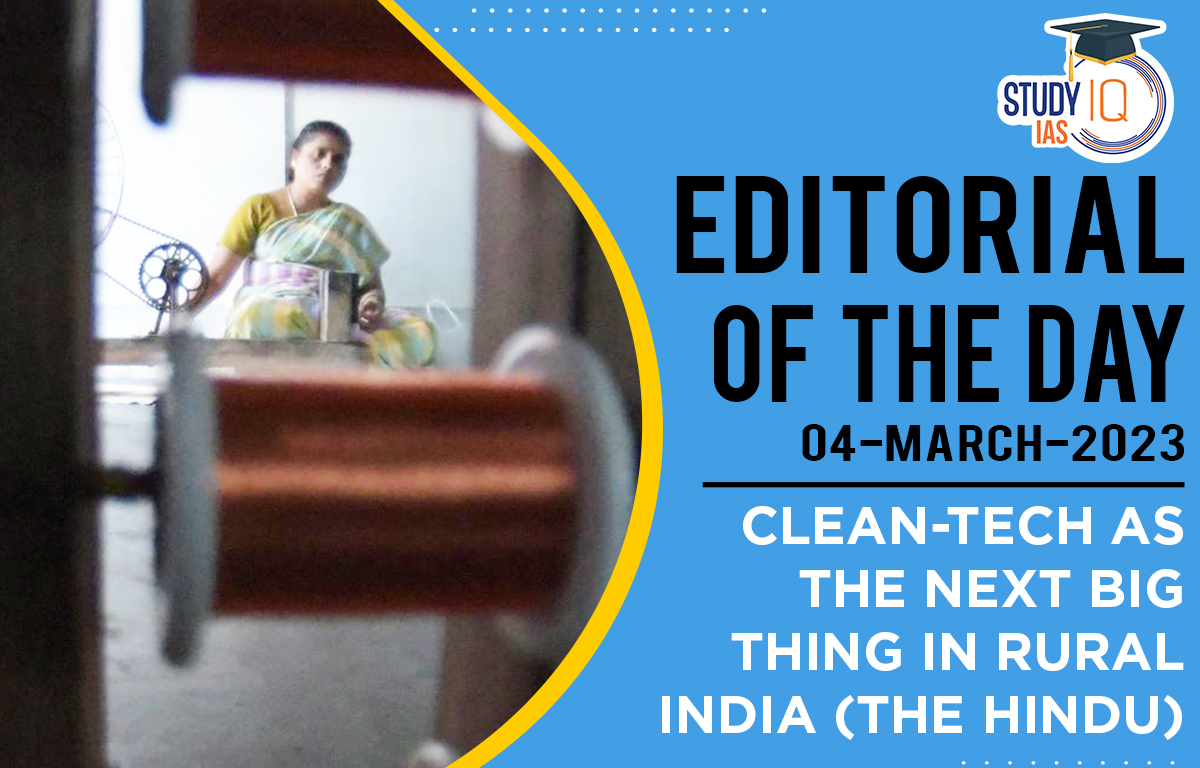Table of Contents
Women from rural India have been adopting clean energy-based livelihood technologies to catalyze their businesses.
- Distributed renewable energy (DRE) is transforming women’s livelihoods at the grassroots, from solar refrigerators to silk-reeling machines and biomass-based cold storage to bulk milk chillers.
- A study by Council on Energy, Environment and Water (CEEW) has shown that 80% out of the 13,000 early adopters of clean tech livelihood appliances are women.
- DRE-powered technologies provide an additional advantage to women entrepreneurs by enhancing income opportunities through mechanization. They also free them from several gender-assigned manual activities that are laborious.
- By 2030, India will witness 30 million women-owned micro, small and medium enterprises (MSMEs) employing around 150 million people.
- DRE livelihood technologies alone have the potential to transform rural livelihoods, with women at the centre of this transition.
Initiatives to Enhance the Reach of Clean Technologies to Rural Women
- Use experience of early adopters: Since DRE appliances are perceived as high-risk purchases by women users, it is necessary that technology providers must allow early users to share their experiences with potential customers.
- Because of their first-hand product experience and local credibility, potential women customers may be encouraged to buy DRE appliances.
- Organizing local events and demos: Women customers having limited access to information would want to see its usage live before believing in its ability and promised benefits.
- Organizing local events will create opportunity for women to network, become aware of the product and interact with people who can help them procure, finance and use these machines.
- Easy financing: Arranging finances for clean technology products remain a bottleneck. Financiers supporting women entrepreneurs need to consider the technologies themselves as collaterals while easing the loan process.
- Technology manufacturers must make efforts to ensure adequate after-sales services and buy-backs. They must be ready to offer partial default guarantees to win confidence of buyers.
- Support backwards and forward market linkages: Providing technology is not enough. Promoters must make efforts for connecting producers to consumption hubs in urban areas to generate higher incomes.
- Since rural women do not have established market linkages because of their limited mobility, setting up business models that enable them to sell to an intermediary can ensure regular revenue.
- Policy convergence: Private entities do not have the reach and scale of government institutions. Ministries working towards promoting livelihoods for women must ensure that policies are in place.
Conclusion
- Scaling the impact of clean energy technologies on women’s livelihoods needs a village of policymakers, investors, financiers, technology promoters and other ecosystem enablers.
- This will help unlock the potential of rural women and clean technologies simultaneously.


 UPPSC Previous Year Question Papers, Dow...
UPPSC Previous Year Question Papers, Dow...
 Most Commonly Used Cancer Drugs and Thei...
Most Commonly Used Cancer Drugs and Thei...
 Tansen Biography, Musical Legacy and Mas...
Tansen Biography, Musical Legacy and Mas...





















